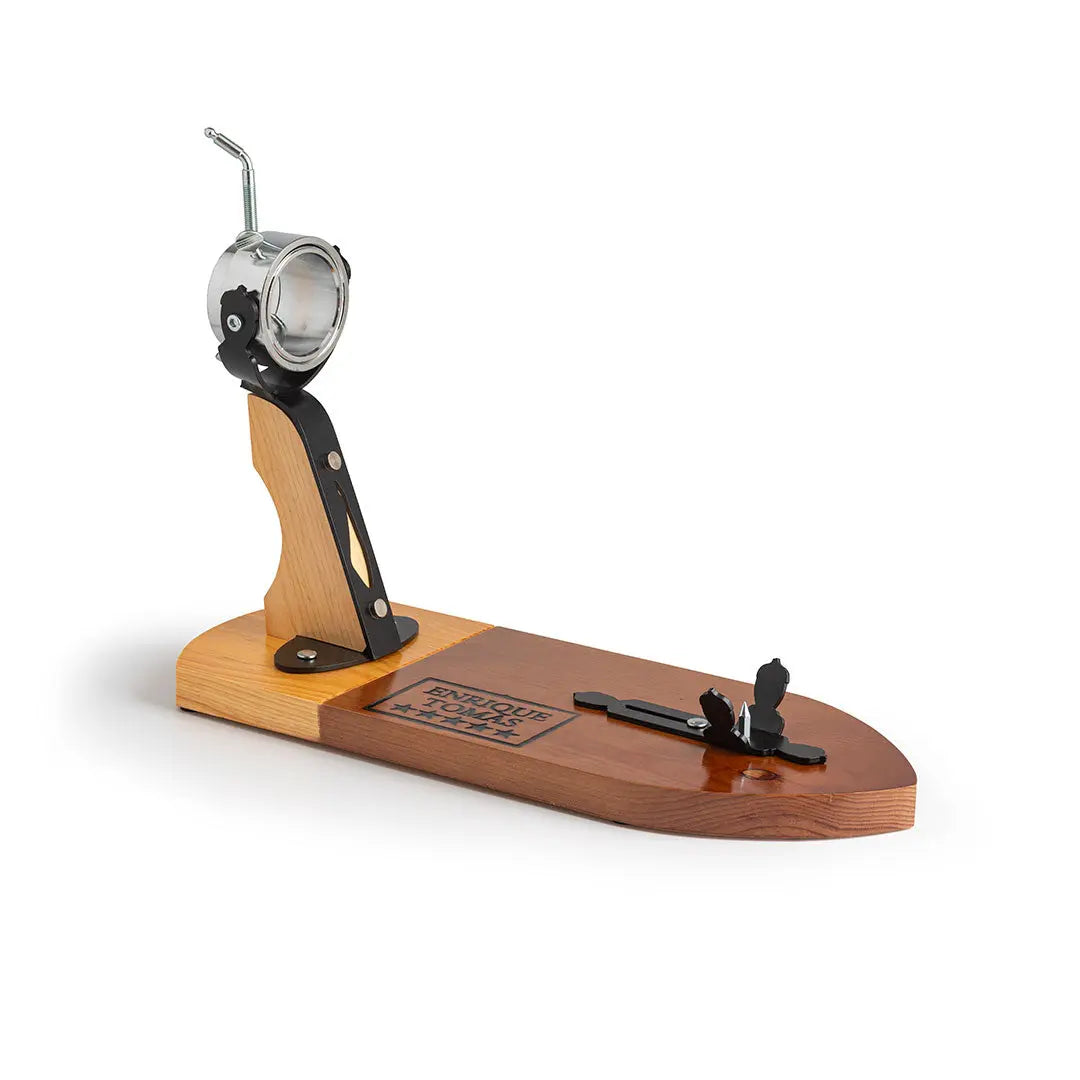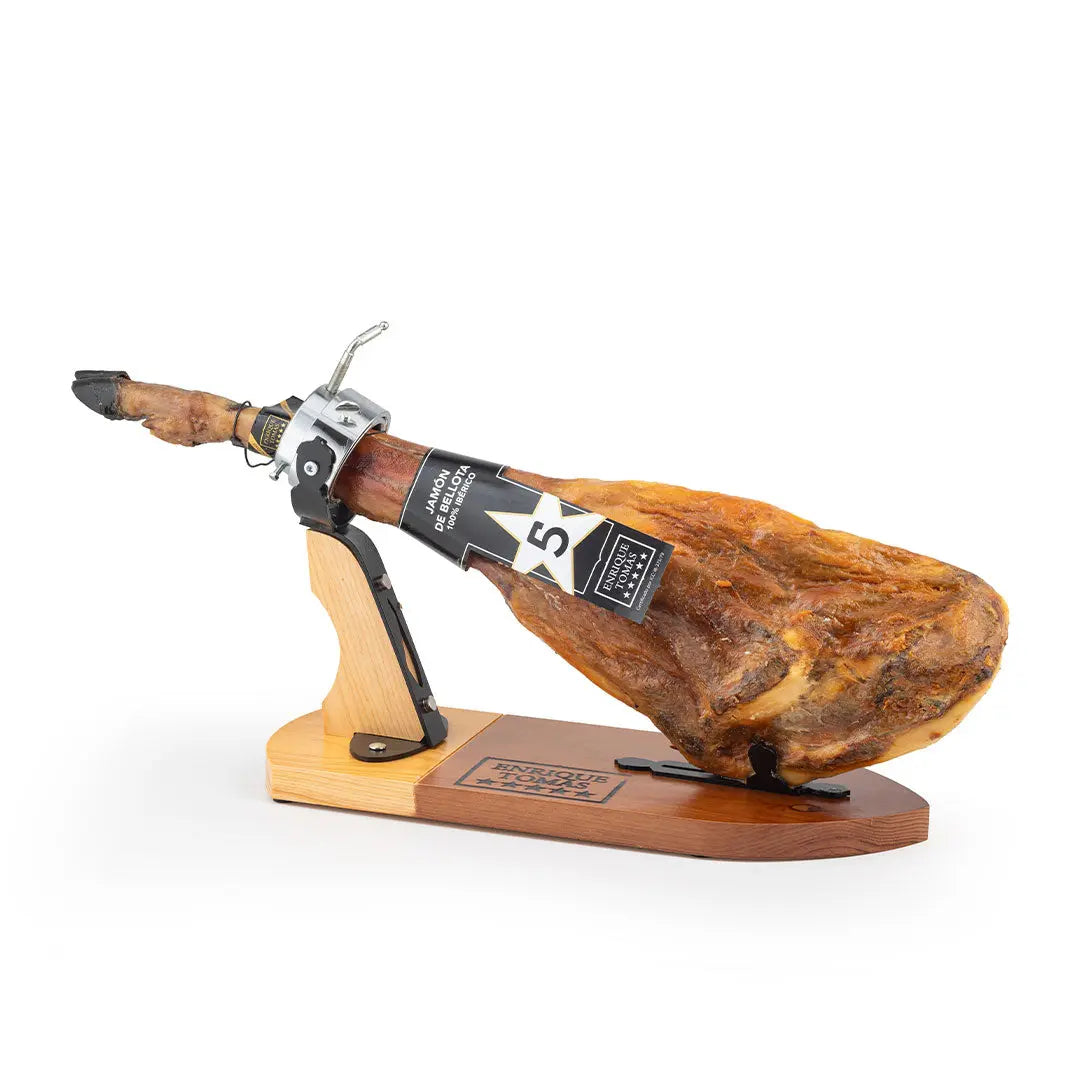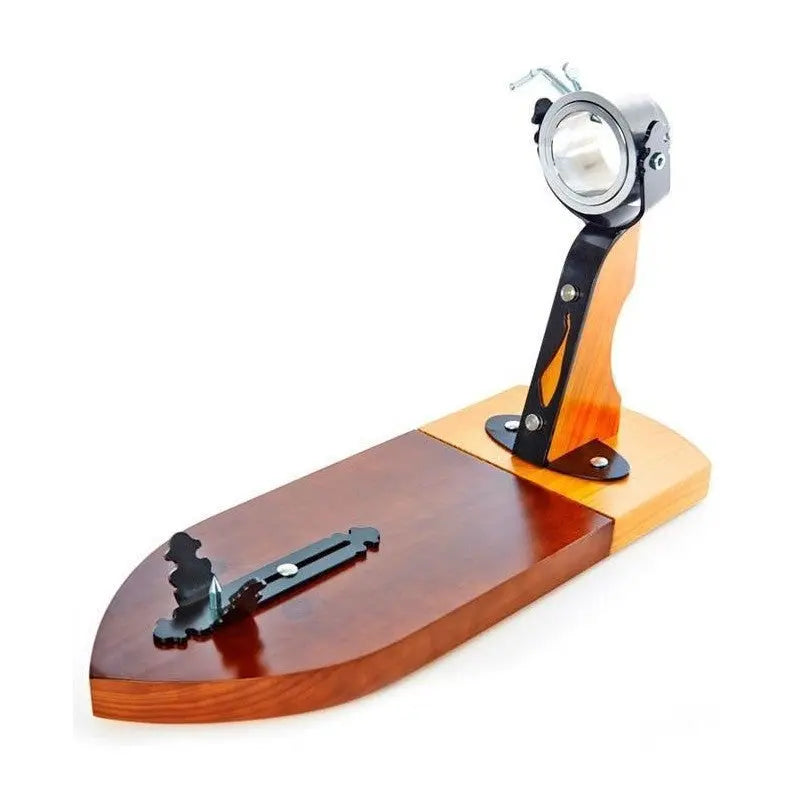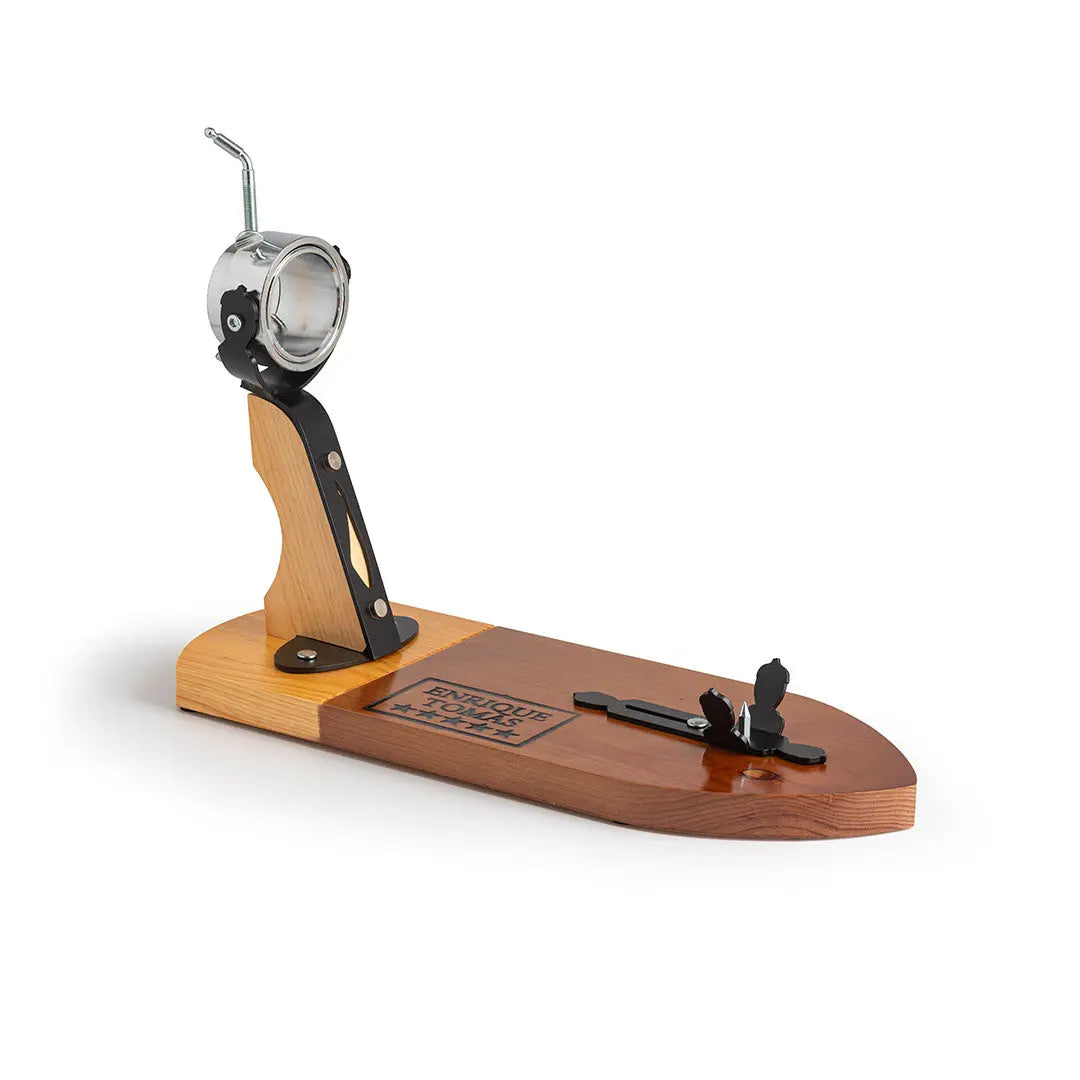
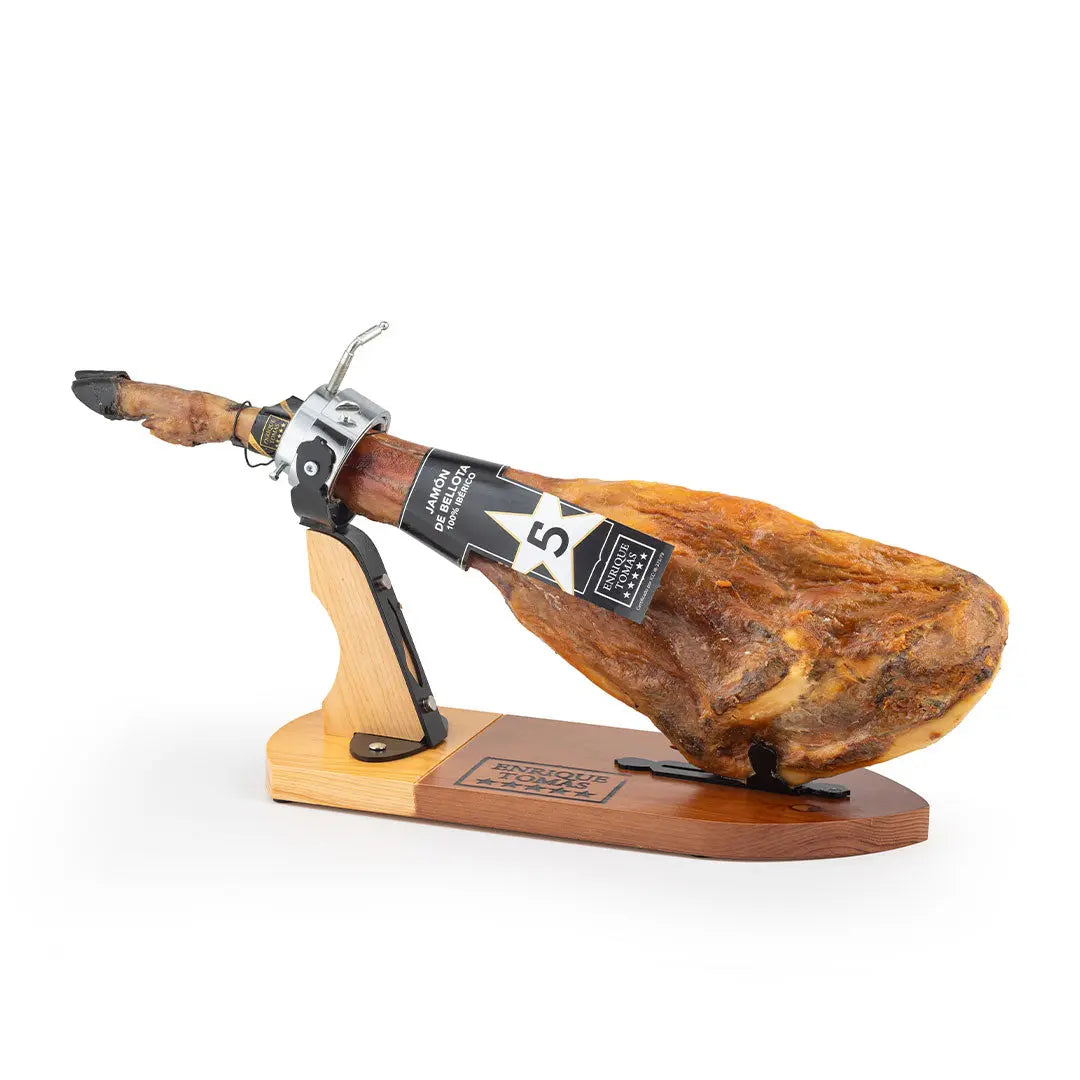
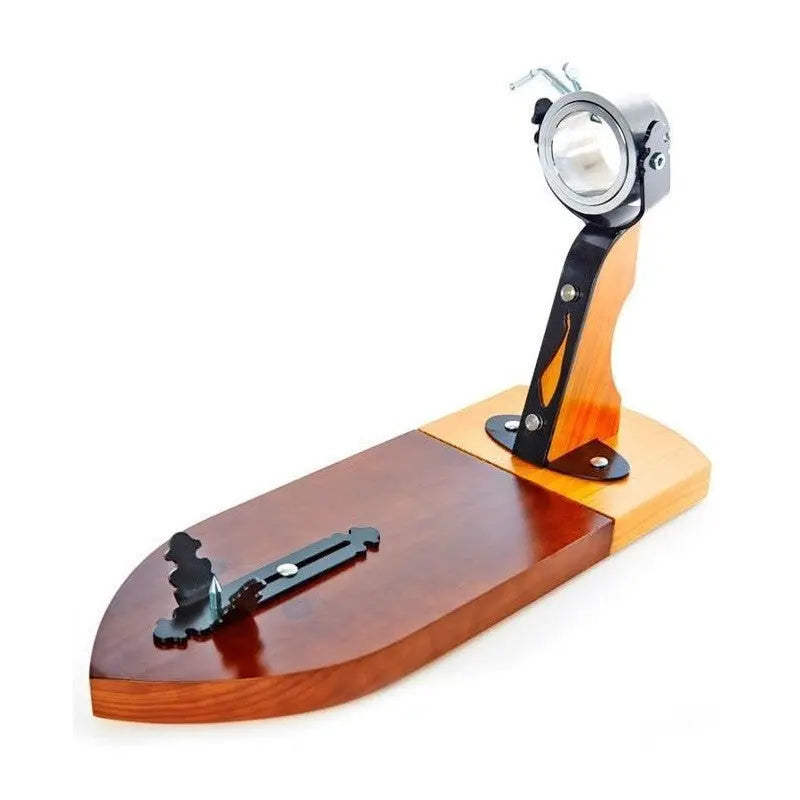
DESCRIPCIÓN
Characteristics of the Rotating Ham Holder
This professional ham holder by Enrique Tomás has an acorn-shaped base, lacquered in two colours, to fix the ham and be able to cut it. The fittings are finished in powder-coated paint for greater strength and a more elegant presence, except for the rotating bushing which is chrome-plated. The base includes a sliding "v" to be able to fix the ham or ham shoulder piece in various positions depending on its size.
Tea Pine wood of first quality and lacquered with non-toxic products.
Ham cut with a knife
It is important to bear in mind that the slicing of ham is as important as any other moment in the process of making an Iberian ham, because if it is not done properly, it could end up with the nuances of our star product. "Hand cutting has, unlike machine cutting, a certain liturgy that makes it more enjoyable.... It has, like all craft or manual activities, a human connotation, a feeling, an energy, an “I don’t know what” that machines do not have, no matter how precise they may be. This is the explanation that Enrique Tomás himself offers us in the book Jamón for Dummies.
What is a Jamón and how is it made?
A jamón is the result of dry curing a pig's hind leg in salt. Depending on the type of pig and its diet, the months of curing vary substantially and its taste will also vary. Due to the large amount of meat in the same jamón, we will find different flavours: the “maza” is the softest part, the “contramaza” the tastiest and as we approach the bone we find more intensity.
Once we have the pig's leg ready, the first thing we have to do is prepare it for salting. The “cook” (the expert as we call them here) makes a v-cut on the pig's rind and decides how much external fat to leave. The more fat the leg has, the less salt it absorbs and the sweeter it gets. Once the previous operation has been performed, the leg is buried in salt for an average of two weeks. If the cook decides to extend this period, the jamón will be tastier. From that moment on, depending on the type of jamón we are going to make, the characteristics of the leg and the flavour we want to obtain, the leg will be hung in the special cellar to dry until it is optimum for consumption.
GARANTÍA Y POLÍTICA DE DEVOLUCIÓN
Para saber cuál es nuestra política de devolución y reembolso clica aquí.


